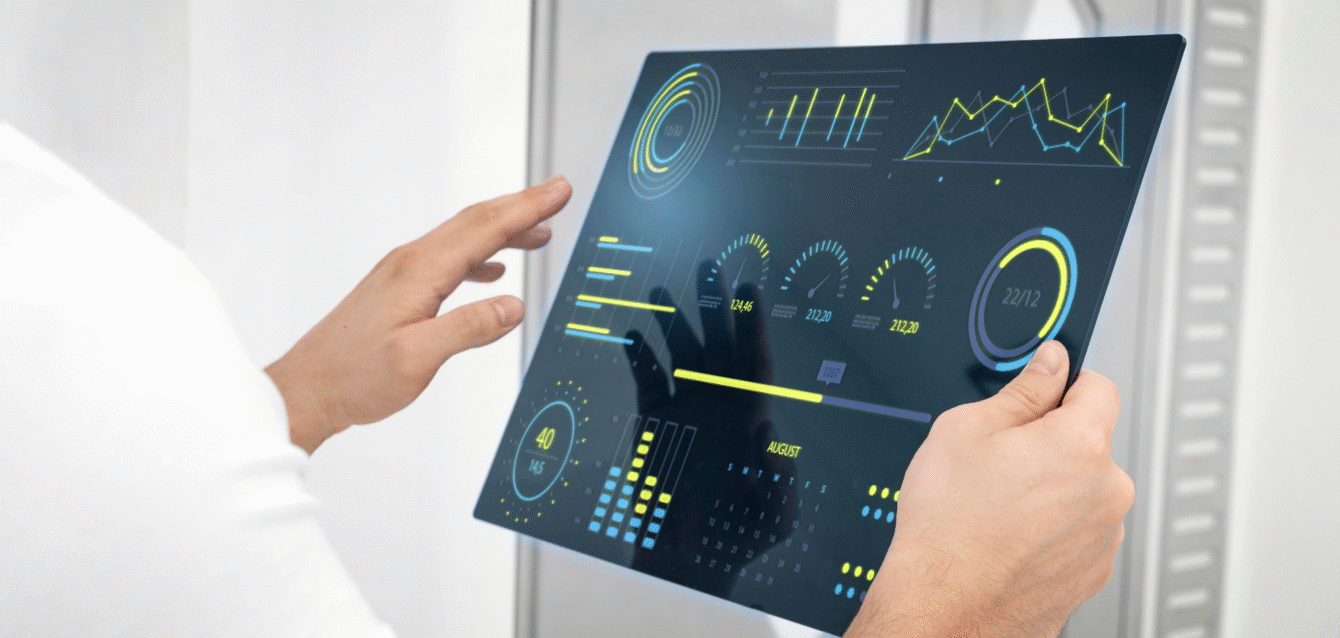Every minute, the world generates over 228 million gigabytes of data from health records and financial transactions to social media interactions and sensor feeds.
But here’s the catch: not all data leads to insight, and not all insight leads to action.
That’s where the distinction between data science and data analytics becomes critical.
These two disciplines often get bundled together in conversations around digital transformation, yet they serve fundamentally different purposes.
One builds intelligent systems that anticipate what’s next.
The other helps decode what’s already happened.
Understanding the difference between data science and data analytics isn’t just a technical exercise, it’s a strategic advantage. In this blog, we’ll break down their roles, processes, and business impact, helping you navigate the data landscape with clarity and confidence.
Here’s what’s inside:
- Market trends driving data adoption
- How data science builds predictive systems
- How data analytics supports business decisions
- Step-by-step breakdown of both processes
- Key comparisons across tools and outcomes
- Why businesses need both for growth
Real-Time Market Insights: Data Science vs Data Analytics
Let’s begin with a quick look at how these two domains are evolving in the global market.
These numbers reflect a growing demand for data-driven decision-making across industries from healthcare and finance to retail and logistics.
What is Data Science?
Data science is a multidisciplinary field that blends mathematics, statistics, computer science, and domain expertise to extract actionable insights from complex datasets. It involves:
- Building predictive models using machine learning
- Designing algorithms for pattern recognition
- Handling unstructured data from diverse sources
- Creating data products and intelligent systems
At its core, data science is about innovation, developing new ways to interpret data and solve problems that traditional analytics cannot.
From a business standpoint, data science is the engine behind smarter decisions and competitive advantage. It enables organizations to forecast demand, personalize customer experiences, detect anomalies before they escalate, and automate complex workflows. Whether it’s predicting patient outcomes in healthcare or optimizing supply chains in manufacturing, data science turns raw data into strategic foresight.
The Data Science Process
The data science process typically includes:
1. Data Collection
This step involves gathering structured and unstructured data from various sources—CRM systems, IoT devices, social media, transactional databases, and more. For businesses, this means capturing every relevant signal across customer behavior, operations, and market trends. The broader and cleaner the data pool, the more accurate the insights.
2. Data Cleaning
Raw data is often messy. Cleaning involves removing duplicates, correcting errors, and standardizing formats. From a business standpoint, this step ensures that decisions are based on reliable information. Poor data quality can lead to flawed forecasts, misaligned strategies, and compliance risks.
3. Exploratory Data Analysis (EDA)
EDA helps uncover hidden patterns, correlations, and anomalies. For example, a retail company might discover that certain products sell better during specific weather conditions. Businesses use EDA to identify opportunities, detect inefficiencies, and understand customer segments more deeply.
4. Model Building
This is where machine learning algorithms come into play. Businesses can build models to predict customer churn, forecast demand, detect fraud, or recommend products. These models are tailored to specific goals, making decision-making faster and more proactive.
5. Model Evaluation
Before deployment, models are tested for accuracy, precision, and relevance. This step ensures that predictions are trustworthy and aligned with business KPIs. A model that performs well in testing is more likely to deliver real-world impact.
6. Deployment
Once validated, models are integrated into business systems—dashboards, mobile apps, or cloud platforms. This enables real-time decision-making, automation, and continuous learning. For example, a logistics company might use a deployed model to optimize delivery routes based on traffic and weather data.
This process is iterative and often experimental, requiring deep technical expertise and domain knowledge.
Business Impact of the Data Science Process
For businesses, this process isn’t just technical, it’s transformational. Each stage contributes to measurable outcomes:
- Data Collection ensures that decisions are based on comprehensive and diverse inputs, not siloed or outdated information.
- Data Cleaning protects against costly errors in forecasting, reporting, or automation.
- EDA helps uncover opportunities that might otherwise go unnoticed, such as customer segments with untapped potential or operational inefficiencies.
- Model Building allows businesses to simulate future scenarios, personalize user experiences, and automate complex decisions.
- Model Evaluation ensures that predictions are trustworthy before they influence high-stakes decisions.
- Deployment turns insights into action, whether it’s dynamic pricing, fraud detection, or predictive maintenance.
What is Data Analytics?
Data analytics focuses on examining datasets to draw meaningful conclusions. It’s descriptive and diagnostic in nature, often used to:
- Identify trends and patterns
- Generate business reports
- Optimize operations
- Support decision-making with historical data
While data science builds models, data analytics interprets them. It’s the bridge between raw data and business strategy.
From a business perspective, data analytics is the foundation for operational clarity. It helps organizations understand what’s working, what’s lagging, and where improvements can be made. Whether it’s tracking customer behavior, analyzing sales performance, or monitoring supply chain efficiency, data analytics turns historical data into actionable insights.
The Data Analytics Process
The data analytics process is a structured approach to transforming raw data into actionable business insights.
It’s linear, fast-paced, and designed to support timely decision-making across departments.
Here’s how each step contributes to business outcomes:
1. Data Extraction
This step involves pulling data from various sources ERP systems, cloud databases, CRM platforms, and third-party APIs. For businesses, it ensures that all relevant operational, customer, and financial data is captured for analysis.
2. Data Transformation
Once extracted, the data is cleaned, formatted, and structured to make it analysis-ready. This includes removing inconsistencies, standardizing formats, and enriching datasets. Clean and well-structured data is the foundation for reliable insights and accurate reporting.
3. Analysis
Using statistical tools, business intelligence platforms, and rule-based logic, analysts explore the data to uncover trends, correlations, and performance metrics. This step helps businesses understand what’s working, what’s lagging, and where improvements are needed.
4. Visualization
Insights are presented through dashboards, charts, and graphs, making complex data easy to interpret. Visualization helps stakeholders across departments quickly grasp patterns and make informed decisions without needing technical expertise.
5. Reporting
The final step involves generating reports that summarize findings and offer recommendations. These reports are used by leadership teams to guide strategy, allocate resources, and monitor KPIs.
Business Value of the Analytics Process
For organizations, this process is more than just number crunching, it’s a decision engine. It enables:
- Real-time performance tracking across departments
- Customer behavior analysis for targeted marketing
- Operational efficiency monitoring to reduce costs
- Sales and revenue forecasting based on historical trends
- Compliance and audit readiness through transparent reporting
Key Differences Between Data Science and Data Analytics
| Aspect | Data Science | Data Analytics |
| Focus | Predictive & Prescriptive | Descriptive & Diagnostic |
| Tools | Python, R, TensorFlow | Excel, SQL, Tableau |
| Data Types | Structured & Unstructured | Mostly Structured |
| Outcome | Models & Algorithms | Reports & Dashboards |
| Skillset | Programming, ML, Stats | Business Intelligence, SQL |
These distinctions help organizations decide which expertise they need based on their goals, whether it’s forecasting future trends or understanding past performance.
Why Businesses Need Both
Businesses today rely on data to guide decisions, improve operations, and stay ahead of market shifts. To make the most of their data, they need both data science and data analytics working together.
Data analytics helps teams understand what’s happening across departments. It tracks performance, highlights inefficiencies, and supports reporting. Leaders use it to monitor KPIs, evaluate campaigns, and make informed decisions based on past and present data.
Data science adds another layer. It builds systems that learn from data and make predictions. These models help businesses anticipate customer behavior, forecast demand, and automate complex decisions.
When these capabilities are integrated, businesses gain a complete view, from what’s already happened to what’s likely to happen next. This combination supports both short-term actions and long-term planning.
Final Thoughts: CaliberFocus as Your Data Partner
Understanding the difference between data science and data analytics is just the beginning. The real value lies in applying these disciplines to solve real-world problems. At CaliberFocus, we don’t just deliver data services, we engineer outcomes through tailored data analytics services that drive measurable impact.
Whether you’re looking to modernize your BI platform, build predictive models, or streamline decision-making, our AI and Data Analytics teams are here to help. We combine deep technical expertise with industry insight to turn your data into a strategic asset.
FAQs
At CaliberFocus, data science is used to build intelligent systems that learn and predict, while data analytics helps interpret existing data to guide decisions. We combine both to support data driven decision making in business across industries.
Decision-making improves when businesses have access to both real-time insights and predictive foresight. CaliberFocus designs solutions that combine analytics for operational clarity with data science models that support strategic planning. This layered approach helps leaders act with confidence.
Yes, and it’s more accessible than ever. CaliberFocus offers scalable data science solutions tailored for startups and SMEs. We help smaller teams leverage machine learning and AI without the need for large infrastructure investments making advanced capabilities practical and cost-effective.
We work with industry-leading platforms like Power BI, Tableau, and Looker, and we also build custom dashboards based on client needs. Our analytics solutions are cloud-native, secure, and designed to integrate seamlessly with existing systems ensuring fast deployment and real-time visibility.
We follow a structured data governance framework that includes validation, cleansing, enrichment, and compliance checks. Our teams ensure that every dataset used in analytics is accurate, consistent, and aligned with business rules, so insights are always reliable and actionable.




